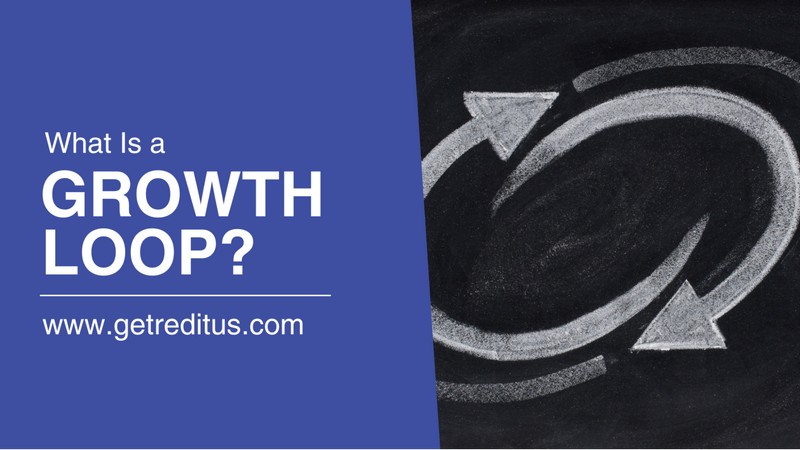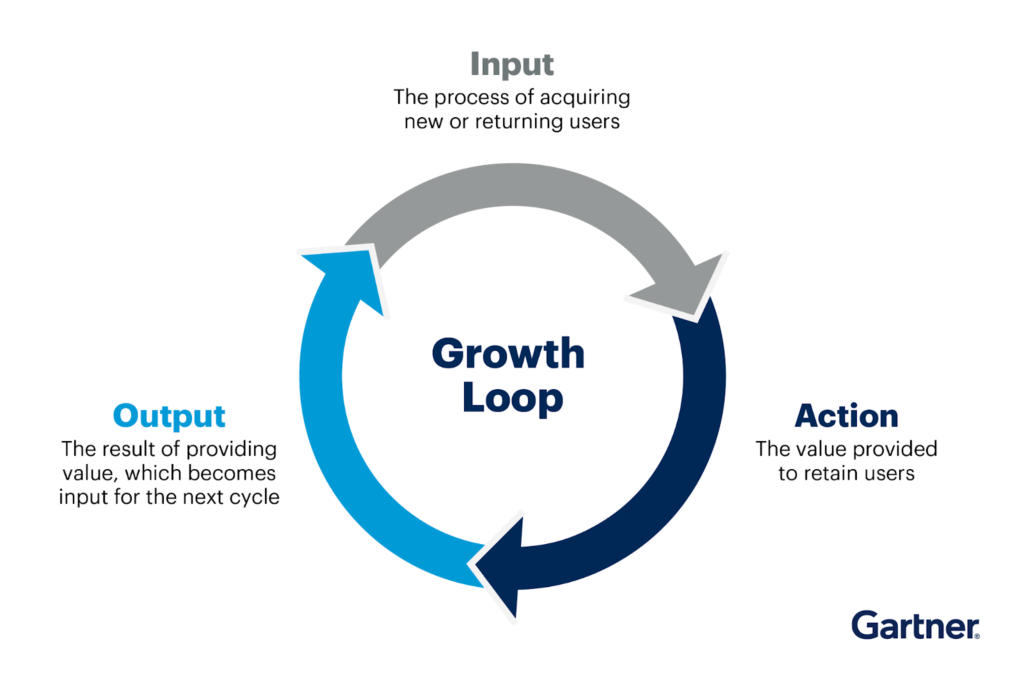What Is a Growth Loop? A Simple Definition (& How to Build Yours)

Are you looking to take your business to the next level? If so, then a growth loop could be just what you need. But what is a growth loop, and how can it help your business grow?
In this article, we'll define a growth loop and explain how you can create one that will drive sustainable success for years.
So let's dive in and get started!
Table of contents
What Is a Growth Loop?
A growth loop is a system that combines multiple channels and activities to encourage sustainable business growth.
The idea is to create a "loop" of methods continuously driving customer acquisition and retention.

Instead of relying on a single tactic or channel, growth loops focus on creating an integrated system that continually brings in new customers and keeps existing ones. This results in a compounding effect that can drive exponential growth over time.
A typical growth loop includes multiple channels, such as organic search and referral marketing.
Each of these channels has its own set of tactics that are used to acquire and retain customers.
For example, organic search tactics include keyword optimization and content creation. In contrast, referral marketing involves offering incentives to existing customers for referring new ones.
Depending on the type of business, there may also be other channels that can be included in your growth loop. These could include email marketing, social media marketing, and paid advertising.
A growth loop is an integrated system, not just a bunch of disconnected tactics. This means that each channel and activity should work together to form a cohesive whole.
What Is the Difference Between a Marketing Funnel and a Growth Loop?
Many people confuse growth loops with marketing funnels. While they are both used to acquire and retain customers, there are some critical differences between them.
A marketing funnel is a linear process that focuses on getting customers from one step to the next, usually starting with awareness and ending with purchase. It's typically used for short-term tactics like paid advertising and lead-generation campaigns.
Growth loops, on the other hand, are more comprehensive and focus on sustaining growth over the long term. They use multiple channels and activities to continuously bring in new customers and keep existing ones engaged.
Some other key differences might include:
- Marketing funnels are focused on driving a single event (e.g., making a purchase). In contrast, growth loops focus on creating long-term relationships with customers.
- Marketing funnels involve a linear process, while growth loops involve an integrated system with multiple channels and activities.
- Marketing funnels typically focus on short-term tactics, while growth loops focus on long-term strategies.
Ultimately, a marketing funnel and a growth loop are tools that can be used for different purposes. While they may overlap in some areas, it's important to understand their key differences to decide which is best for your business.
What Are the Essential Elements of a Growth Loop?
Now that you know the basics of what a growth loop is, let's take a look at the essential elements of a growth loop and how they work together.
1. Trigger actions
The first element of a growth loop is trigger actions. Trigger actions are activities or events that serve as the "spark" for the loop. These triggers can be almost anything, from a customer's first purchase to an email signup or even a referral.
Let's use Amazon as an example.
When someone creates a new Amazon account, that triggers the growth loop. Once they've created their account, Amazon can target them with personalized emails and recommendations based on browsing history.
This helps Amazon nurture relationships with customers over time, which can lead to more purchases and referrals.
2. Outputs
Outputs are the results of the trigger actions. They can be anything from purchases and referrals to website visits or email signups.
For example, if someone adds an item to their Amazon cart, that's output.
Once they've added the item to their cart, Amazon can send them a custom email with a discount code or other incentives to encourage them to purchase.
In addition, Amazon can use this output as a signal to start targeting them with more personalized emails and product recommendations (or add similar items to their cart).
3. Inputs
Finally, inputs are activities or events that help fuel the growth loop and keep it going. In the case of Amazon, inputs could include things like product reviews, email signups, and referrals.
For example, when someone leaves a review for an item they purchased on Amazon, that's input. This helps Amazon learn more about its customers and can help inform future product recommendations or marketing campaigns.
In addition, when someone refers a friend to Amazon, that's another input. This helps Amazon bring in more customers, potentially leading to more purchases and referrals.
Overall, inputs are activities that help keep the growth loop going and can help drive more engagement over time.
Growth Loops FAQs
Before we wrap up, let's look at some commonly asked questions about growth loops.
What are the benefits of growth loops?
Growth loops are a powerful tool for driving customer engagement and sales over the long term. They help you create personalized experiences for your customers and can help you keep them coming back for more.
What are some examples of growth loops?
Some common examples of growth loops include referral programs, loyalty programs, and email marketing campaigns.
How can I create a successful growth loop?
Creating a successful growth loop requires careful planning and a deep understanding of your customers. You need to identify key triggers, outputs, and inputs that will help you keep the loop running.
How long does it take to see results from a growth loop?
It depends on the complexity of your loop and how well you've optimized it. Generally speaking, you can see results within a few weeks of launching your loop.
Conclusion
Growth loops are essential for any business that wants to drive customer engagement and sales. When used correctly, they can help you create an ongoing growth cycle for your business.
Hopefully, this article has given you a better understanding of how growth loops work and how you can use them to your advantage.

